Have you ever dreamed of a journey where the past and future converge—where soaring skyscrapers reach the sky yet embrace the timeless elegance of a thousand years of civilization? That place is Shanghai—the city that never sleeps, a shimmering and enchanting “Oriental Pearl.” What could be more thrilling than planning your own adventure? Self‑guided travel in Shanghai is growing in popularity among wanderlust‑driven souls, offering freedom to explore and authentic experiences that fixed tour packages simply can’t match.
If you’re planning an independent trip to Shanghai in 2025, let me unveil a panoramic view of this magnificent city with a full self‑travel guide from A to Z—so you can turn your dream into reality!
1. Introducing Shanghai: Where Past Meets Future
Shanghai is not only a bustling metropolis but also a living museum, where every street and corner tells its own story. From proud Art Deco architecture to vibrant traditional markets, Shanghai is a multifaceted canvas inviting your exploration.
1.1. Why choose a solo adventure to Shanghai?
Opting for a self-guided trip to Shanghai is not just a decision — it’s a promise to yourself of freedom and limitless discovery:
Take control of every moment: Gone are rigid schedules — you're the captain of your own exploration. Stay longer at a favorite café, or wander into a surprising alleyway — every choice is yours to make.
Smart saving, rich experiences: Planning your own itinerary helps you manage your budget effectively. Whether it's cozy budget hostels or luxury hotels, street food or fine dining — it's all within your reach.
Immerse in local life: This is a golden opportunity to truly feel the pulse of Shanghai, interact with locals, and uncover things not found in guidebooks.
Broaden your personal limits: Solving all arising issues on your own — from navigating the streets to overcoming language barriers — will be a valuable journey of personal growth.
1.2. Ideal time to explore Shanghai?
Shanghai boasts its own charm across all four seasons, but for a perfect self-guided trip, consider these periods:
Spring (March - May): Shanghai dons a delicate cloak of green buds and blooming cherry blossoms. Cool air and fresh weather make it ideal for leisurely strolls.
Autumn (September - November): Known as the most beautiful season in Shanghai. Clear blue skies, golden leaves, and crisp, dry air offer perfect conditions for sightseeing.
Avoid summer (June - August) due to the sweltering heat and winter (December - February), which can be harsh, though snow lovers might catch a rare snowfall!
2. Essentials for Your Self-Guided Adventure
Thorough preparation is the golden key for a smooth and memorable self-guided trip to Shanghai.
2.1. Visa and Essential Documents

Getting a visa is the very first gateway to any journey abroad.
For Vietnamese travelers, a China visa is the first gateway to set foot in Shanghai. Prepare your documents carefully and submit early to avoid unnecessary complications. Required documents typically include:
Original passport: Valid for at least 6 months beyond your planned departure date from China.
Visa application form: Fully and accurately filled out.
Passport photo: Correct size and specifications as per the Embassy/Consulate requirements.
Financial proof: Bank statements or savings books to prove you can cover the trip.
Round-trip flight and hotel booking confirmations: Clear evidence of itinerary and accommodation.
Detailed itinerary: List the places you plan to visit.
Don’t forget to check the latest info on the official website of the Chinese Embassy in Vietnam!
2.2. Accommodation, Transportation, and “Tech Weapons”
Where to stay?
Shanghai offers a myriad of choices — from luxurious boutique hotels in the historic French Concession, modern skyscraper hotels in Pudong with million-dollar views, to cozy budget hostels or convenient Airbnb apartments. Ideal areas to stay include:
The Bund (central, easy to get around),
Pudong (modern, close to skyscrapers),
Xintiandi (a mix of old and new vibes).
Getting around: Public transport in Shanghai is a source of pride.
Metro: With an enormous, clean, and efficient metro system, this is the top choice for your self-guided trip.
Taxi/Didi: Convenient, especially for group travel or quick trips. Install the Didi Chuxing app (China’s Uber/Grab equivalent).
Bus: Good for street sightseeing, though a bit trickier for foreigners.
Must-have “magic” apps:
Tatinta Guide: Offers a virtual tour guide with audio tours for global destinations. It also features a Travel Assistant for destination info, trip advice, finding travel buddies, and prep checklists. Available on App Store and Google Play.
Metro Shanghai: A “living map” of Shanghai’s subway system.
Maps: Baidu Maps is #1 in China (if you can read Chinese); otherwise, prep Apple Maps or Google Maps (VPN required).
Translation: Google Translate or Pleco (Chinese dictionary) are essential companions.
WeChat/Alipay: Dominating mobile payment in China. Learn to link your international card to use them.
VPN: Extremely important if you want to access familiar social media like Facebook, Instagram, Google, YouTube...
3. Must-Visit Attractions in Shanghai
Shanghai is a magnificent symphony composed of unique destinations, each carrying its own distinctive note that together create an irresistible allure. Below are the must-see places that no self-guided traveler should miss — along with unforgettable experiences and iconic photo-worthy spots for us to explore and enjoy.
3.1. The Bund
What makes it special:
The Bund is not only an eternal symbol of the city, but also a place where the past and present converge. Standing here, we may feel like we've stepped into a movie that blends historical drama with futuristic fantasy. On one side lies a row of elegant European-style buildings from the 19th and early 20th centuries — each featuring distinct styles such as Gothic, Baroque, Romanesque, and Art Deco — forming a unique open-air architectural museum. On the opposite side, across the Huangpu River, is Pudong’s glittering skyline of modern skyscrapers, representing Shanghai’s astounding development.
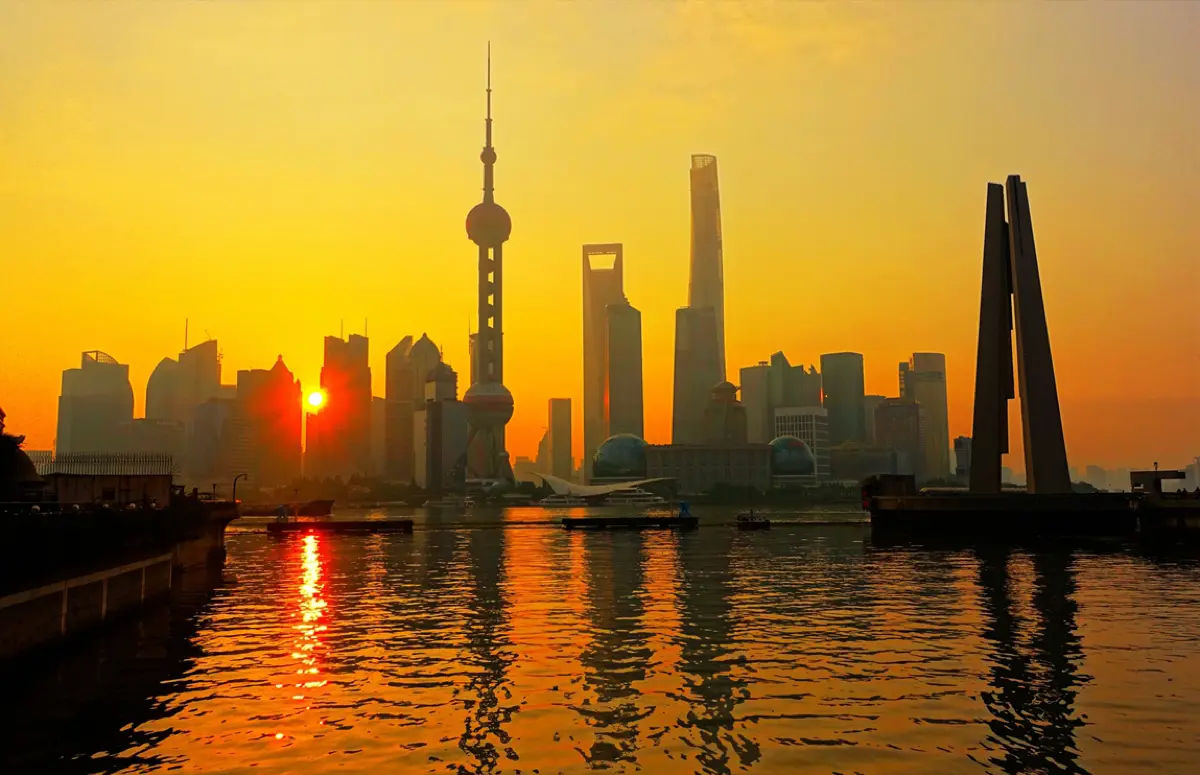
The Bund at dusk is breathtakingly beautiful, stirring the soul with its charm.
The Bund at twilight stirs the soul with its breathtaking beauty
Top check-in and experience spots:
Watch the sunrise or sunset: These are the most magical times to admire the Bund. At sunrise, the first rays of light illuminate the ancient facades, creating a dreamlike scene. At night, the entire Bund and Pudong area lights up with millions of dazzling lights, forming a magnificent picture.
Stroll along the riverwalk: Let’s take our time walking along the stone-paved riverside path, feel the cool breeze from the Huangpu River, and soak in panoramic views of the city.
Cruise on the Huangpu River: To get the most complete and scenic view of both the Bund and Pudong, an evening river cruise is an experience we simply cannot miss.
3.2. Pudong
What makes it special: Pudong is a land of 21st-century architectural wonders, where iconic skyscrapers rise in celebration of Shanghai’s prosperity and global ambition. Each building here is not just a structure but a modern masterpiece.
Must-see or check-in experiences:
- Oriental Pearl Tower: With its unique shape of two giant spheres stacked on a slender tower, this is one of the most recognizable icons of Shanghai. We can ascend to its observation decks for sweeping views or walk on a transparent glass floor to feel the thrill of height.
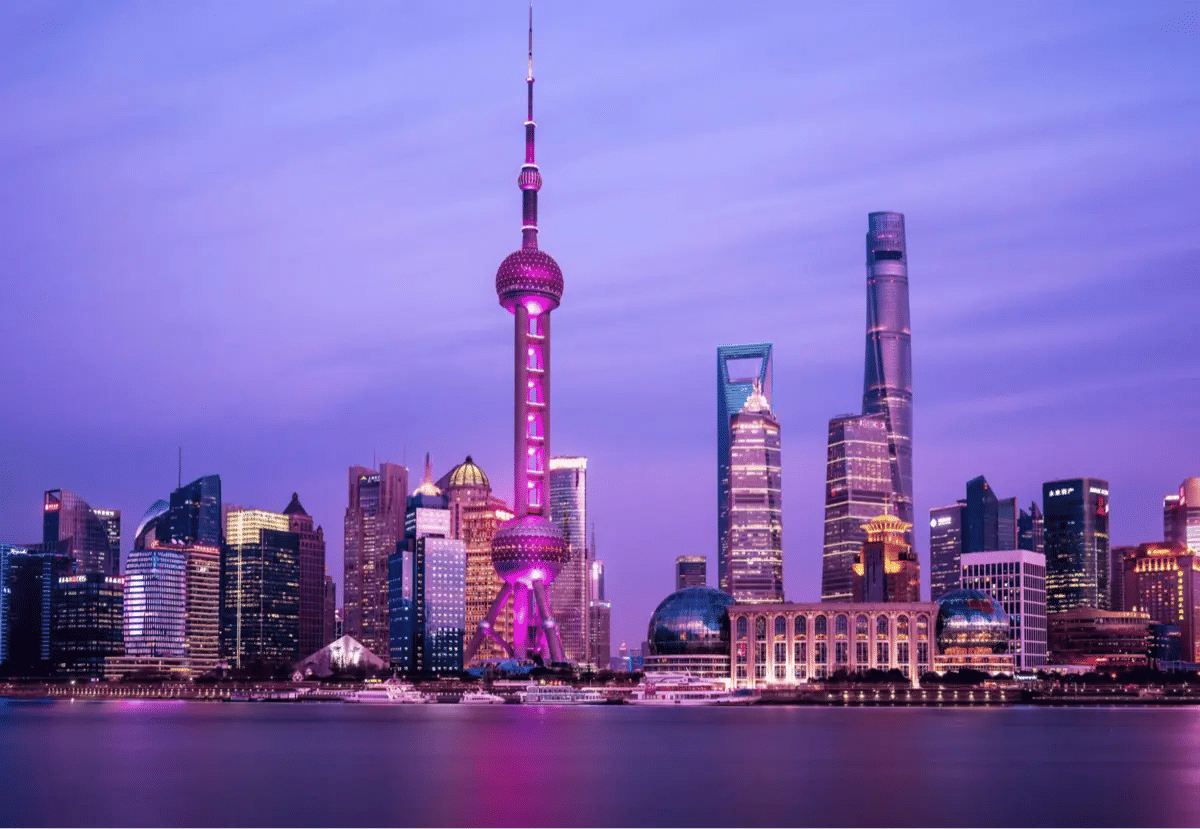
A famous symbol of Shanghai – the Oriental Pearl Tower.
- Shanghai World Financial Center (SWFC): Nicknamed the “giant bottle opener,” its trapezoidal cut-out at the top creates a distinctive silhouette. The observation deck offers stunning panoramic views.

The tallest skyscraper in Shanghai is the Shanghai World Financial Center (SWFC).
- Shanghai Tower: The third tallest building in the world, it offers a breathtaking experience of viewing the entire city from the 118th and 119th floors. It’s especially mesmerizing at night.
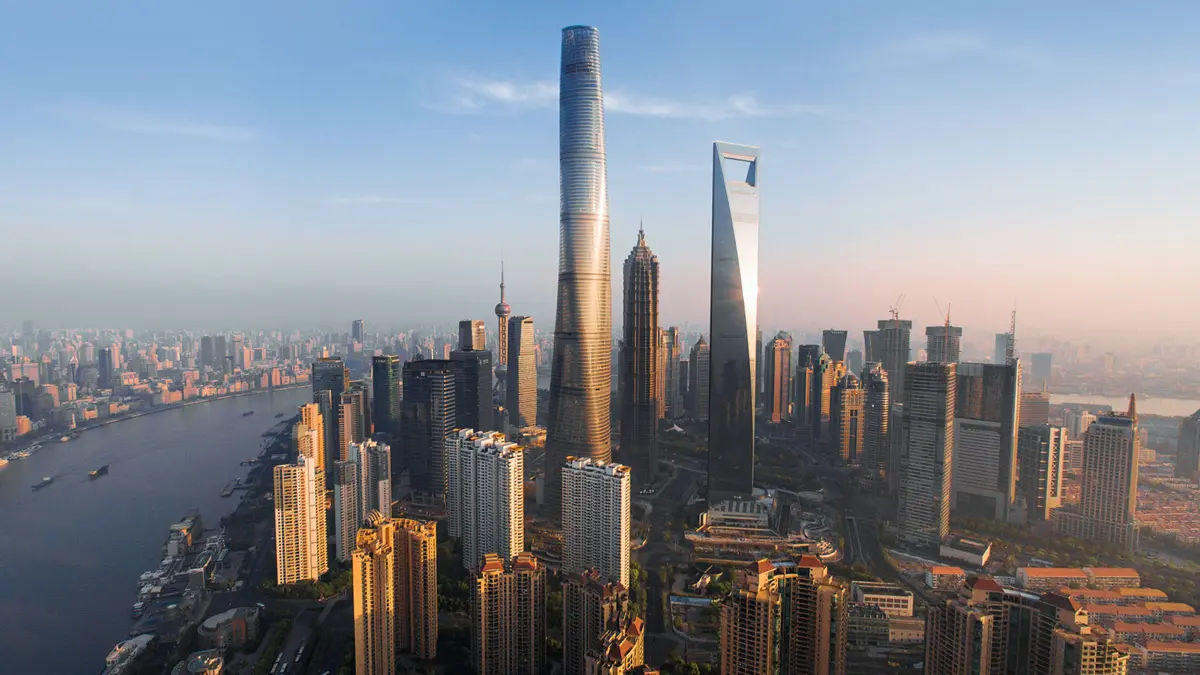
The pride of the Shanghainese, Shanghai Tower is the third tallest building in the world.
- Shopping & nightlife: Pudong is home to luxury malls, high-end restaurants, and vibrant rooftop bars — ideal for enjoying the city's electric nightlife.
3.3. Yu Garden and Yuyuan Market
What makes it special: Yu Garden is a peaceful oasis — a beautiful classical Chinese garden nestled in the heart of the bustling city. With finely carved wooden pavilions, serene koi-filled ponds, winding bridges, and artistically arranged rocks, it feels like we’re stepping into a scroll painting. Beside it, the lively Yuyuan Market buzzes with vendors selling souvenirs, teas, silks, and flavorful street food.
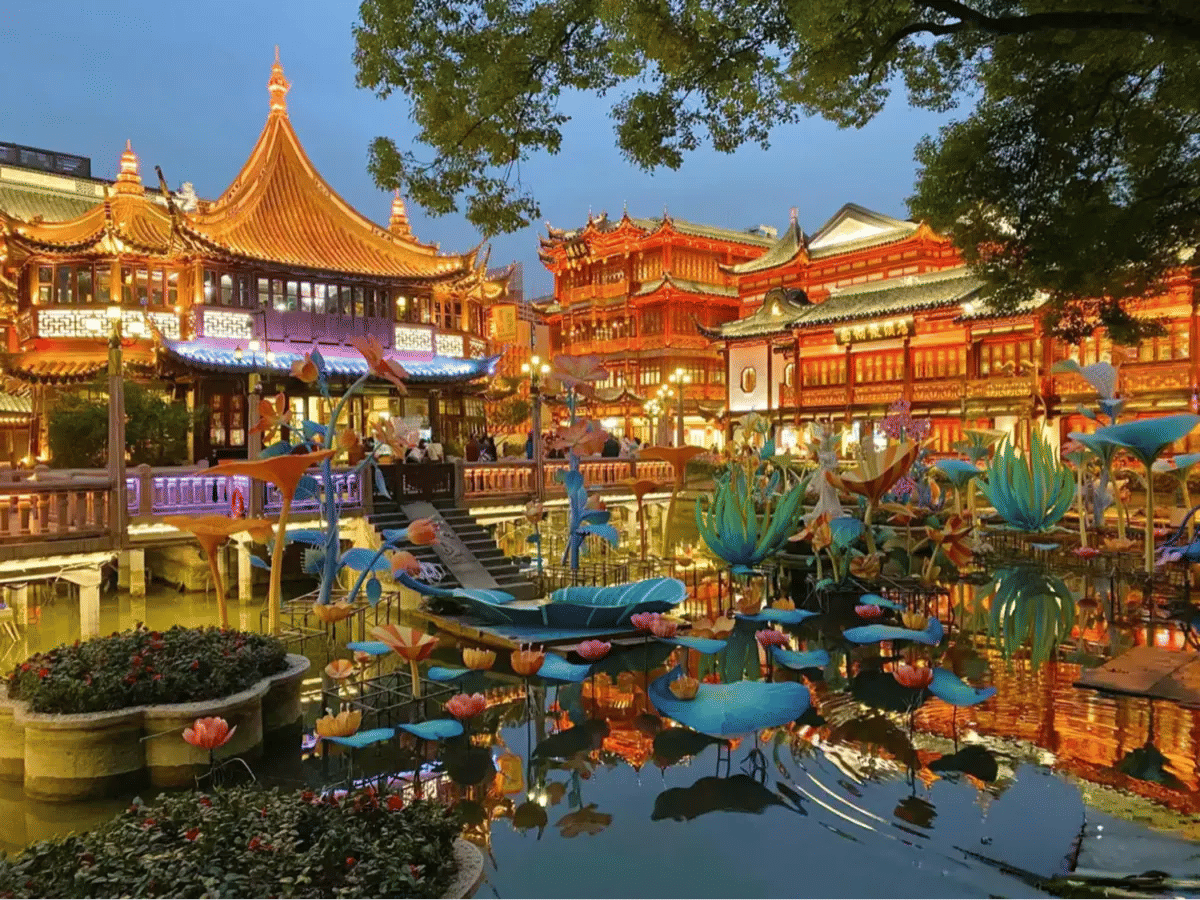
Yu Garden is a classical Chinese garden rich in traditional aesthetics.
Must-see or check-in experiences:
- Stroll through Yu Garden: Let’s spend 2–3 hours wandering its scenic corners, capturing the harmony of ancient architecture and lush greenery.
- Taste local cuisine at Yuyuan Market: Let’s not miss Xiao Long Bao (soup dumplings), Tang Yuan (sweet rice balls), and a variety of traditional snacks.
- Shop for souvenirs: This is the perfect place for cultural gifts like paper fans, ceramics, watercolor paintings, and handmade crafts.
3.4. Nanjing Road
What makes it special: Nanjing Road is Shanghai’s most bustling and iconic shopping street — rivaling fashion avenues in Paris or New York. It’s split into two main parts: Nanjing East Road is pedestrian-friendly, lined with traditional department stores and branded shops. Nanjing West Road is the hub for international luxury brands and modern shopping malls.
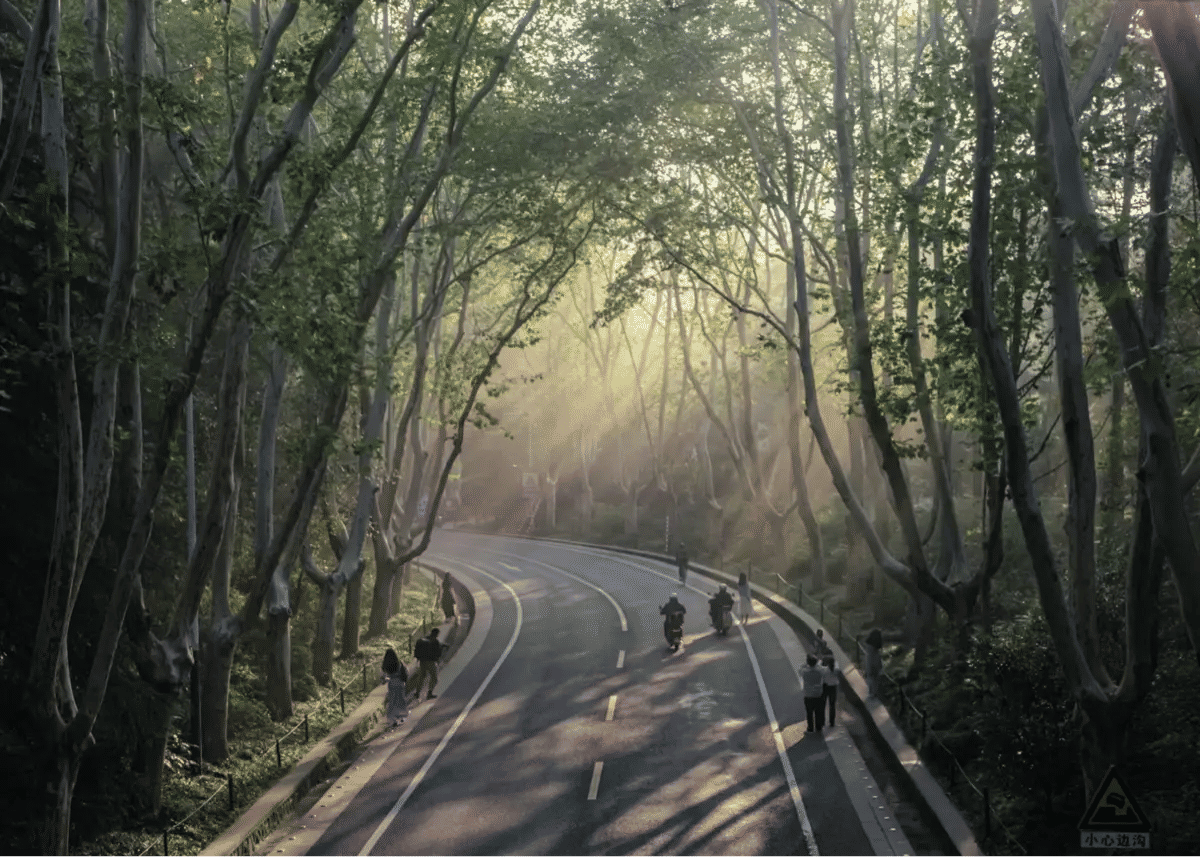
Nanjing Road, picturesque like a painting, is often featured in Chinese films and dramas.
Must-see or check-in experiences:
- Shop to our heart’s content: Whether it’s global fashion or local souvenirs, we’ll find it all here.
- Enjoy the culinary variety: We can choose from countless restaurants and cafés — from street eats to upscale dining.
- Admire the architecture: Even if we don’t shop, a stroll along this neon-lit boulevard — especially in the evening — is a magical experience.
3.5. The French Concession
What makes it special: The French Concession is a serene European pocket amid Shanghai’s hustle. With its leafy streets, French villas, hidden cafés, and fine restaurants tucked in charming alleys, it’s the perfect place for romantic walks. It’s also home to artists and designers, creating a cultured, creative atmosphere.
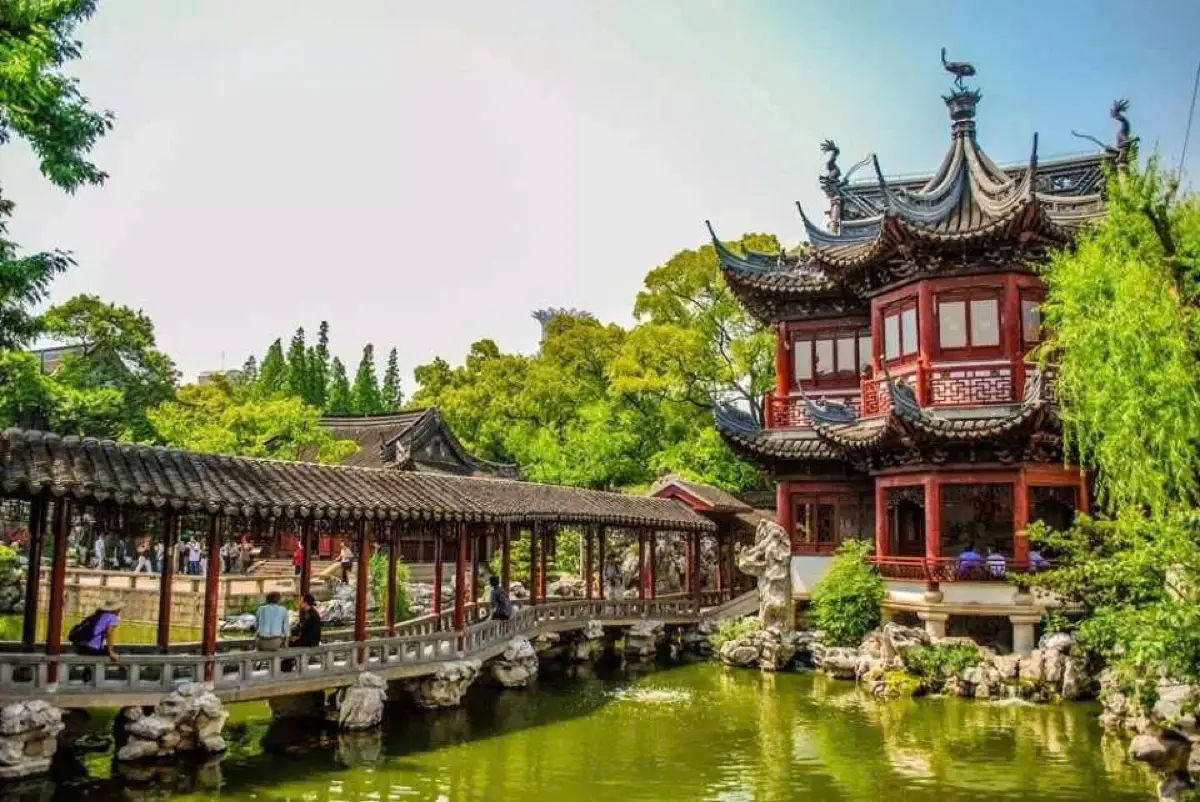
Khu Tô Pháp Giới - góc châu Âu bình yên giữa lòng Thượng Hải
Must-see or check-in experiences:
- Walk the leafy avenues: Streets like Wukang Road, Fuxing Road, and Huaihai Road invite us to slow down and enjoy the scenery.
- Savor café culture: Whether it's a quaint coffee shop or elegant restaurant, let’s pause and immerse ourselves in the mood.
- Discover boutiques and crafts: This district hides gems — boutique stores and art galleries worth browsing.
3.6. Shanghai Museum
What makes it special: The Shanghai Museum is a grand treasure trove of history and art — ideal for curious minds and cultural explorers. It holds thousands of valuable artifacts from China’s feudal dynasties — from ceramics and bronzes to paintings, calligraphy, jade, seals, and sculptures — all organized to deepen our appreciation of Chinese heritage.
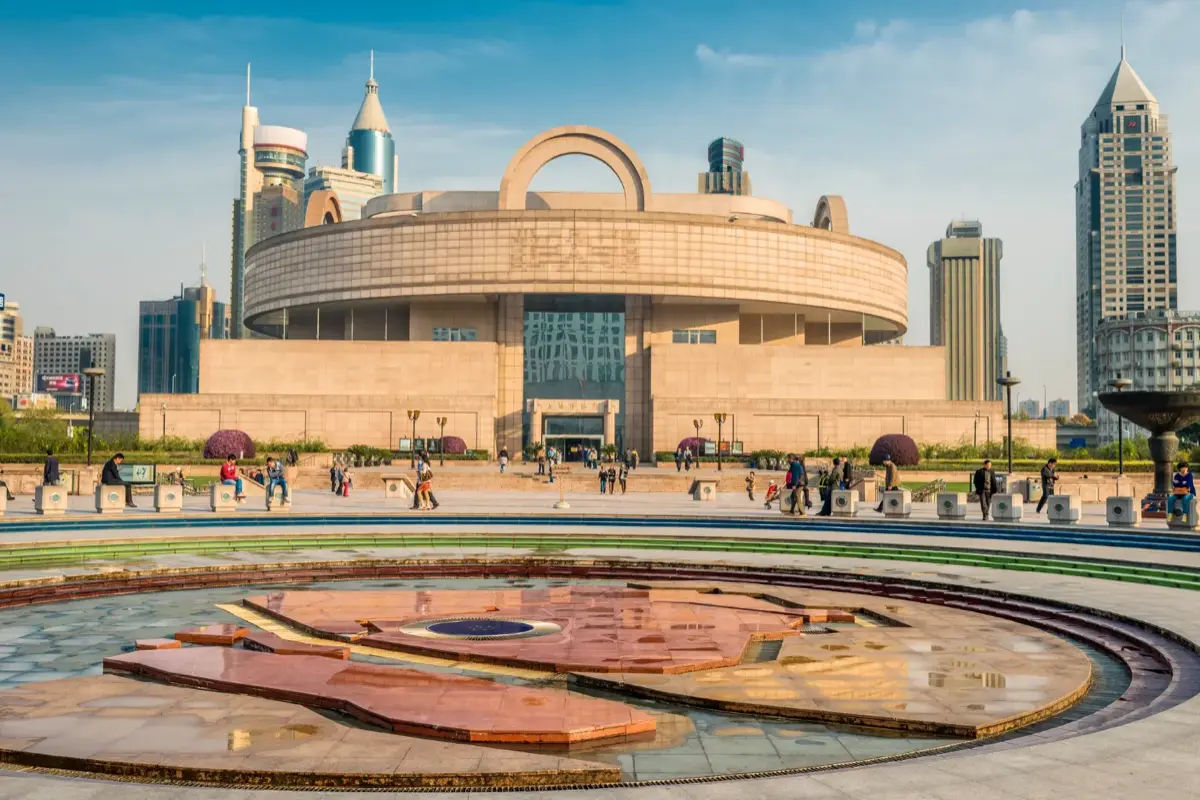
The Shanghai Museum showcases priceless artifacts from China’s feudal dynasties.
Must-see or check-in experiences:
- Explore the galleries: We should spend at least half a day here. Pay special attention to the ancient bronze and blue-and-white porcelain collections.
- Attend themed exhibitions: The museum often hosts rotating displays focused on specific topics, offering new insights each visit.
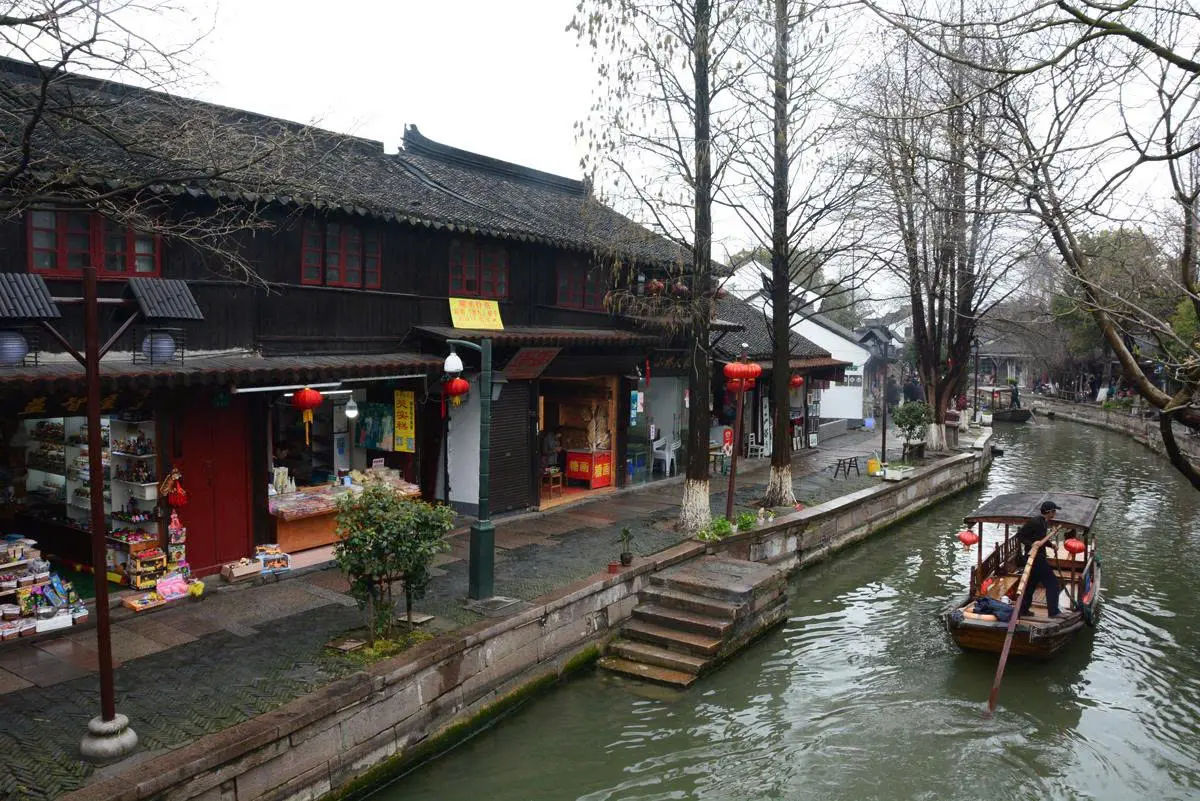
Zhujiajiao Water Town exudes an ancient charm intertwined with a touch of mystery.
3.7. Zhujiajiao Water Town
What makes it special: If time allows, we should spend a day at this “Venice of Shanghai.” Just outside the city, Zhujiajiao is an ancient water town with a 1,700-year history. Stone bridges cross gentle canals, old homes reflect on the water, mossy alleys beckon, and wooden boats glide — transporting us into a calm, old-world setting far from the modern city.
Must-see or check-in experiences:
- Ride a boat along the canal: The best way to see the town and admire its timeless bridges and waterfront architecture.
- Wander the alleys: Let’s discover small shops selling crafts, local teas, and regional eats.
- Savor local specialties: Don’t miss Zongzi (sticky rice dumplings) and dishes made from fresh local fish.
- Visit historical landmarks: Quan Yin Temple, Kezhi Garden, and the old post office offer glimpses into the town’s heritage.
4. Culinary Delights and the Charming People of Shanghai
A self-guided trip to Shanghai wouldn’t be complete without diving into its rich culinary landscape and engaging with the locals.
4.1. Shanghai’s Culinary Paradise: A Feast for All Senses
Shanghai is a harmonious symphony of flavors, blending robust traditional dishes with the sophistication of global cuisine. Let’s not miss:
Xiao Long Bao (Soup Dumplings): These iconic steamed dumplings feature paper-thin wrappers encasing juicy pork and a burst of hot broth. To enjoy them fully (without burning our mouths), we should gently bite into the wrapper to let the soup flow into a spoon, blow to cool, then savor. The combination of soft skin, rich filling, and flavorful soup makes for an unforgettable bite. This is a must-try when we visit Shanghai!a

Xiao Long Bao with delicate thin wrappers and piping hot broth inside.

Pan-fried dumplings with a soft, chewy top and a crispy golden bottom.
- Yangchun Mian (Shanghai Noodles): This humble yet refined noodle dish features a clear, lightly sweet broth, perfectly springy noodles, and a fragrant sprinkle of scallions. It delivers a rustic, heartwarming taste that’s simple but irresistible.
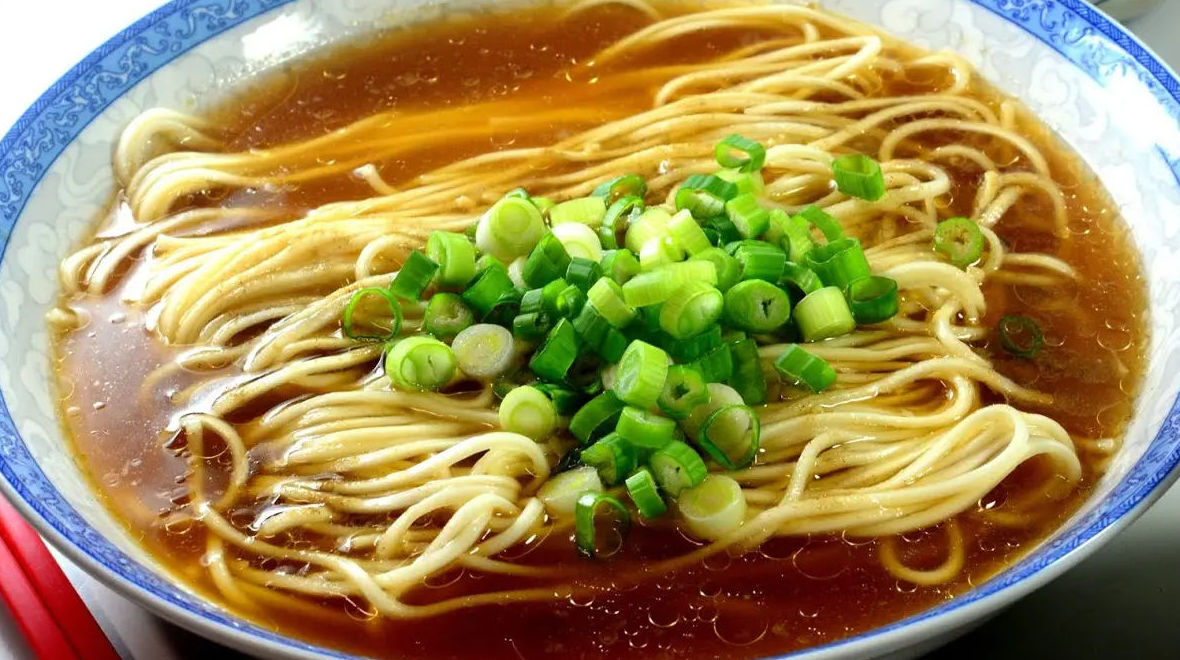
Yangchun noodles are famous for their light and comforting flavor.
- Hairy Crab (Dazha Xie): A prized autumn delicacy in Shanghai, hairy crab is celebrated for its rich golden roe and sweet, firm flesh. It’s a seasonal culinary gem sought after by food lovers — giving us a chance to taste a luxurious and authentic Shanghai experience.

Golden crab roe and sweet, firm crab meat that melt on the tongue.
Dongpo Rou (Dongpo Pork): This classic braised pork belly dish is a star of Chinese cuisine. Each piece is slow-cooked until tender enough to melt in our mouths, soaked in a deeply savory, sweet sauce — rich but never overwhelming.
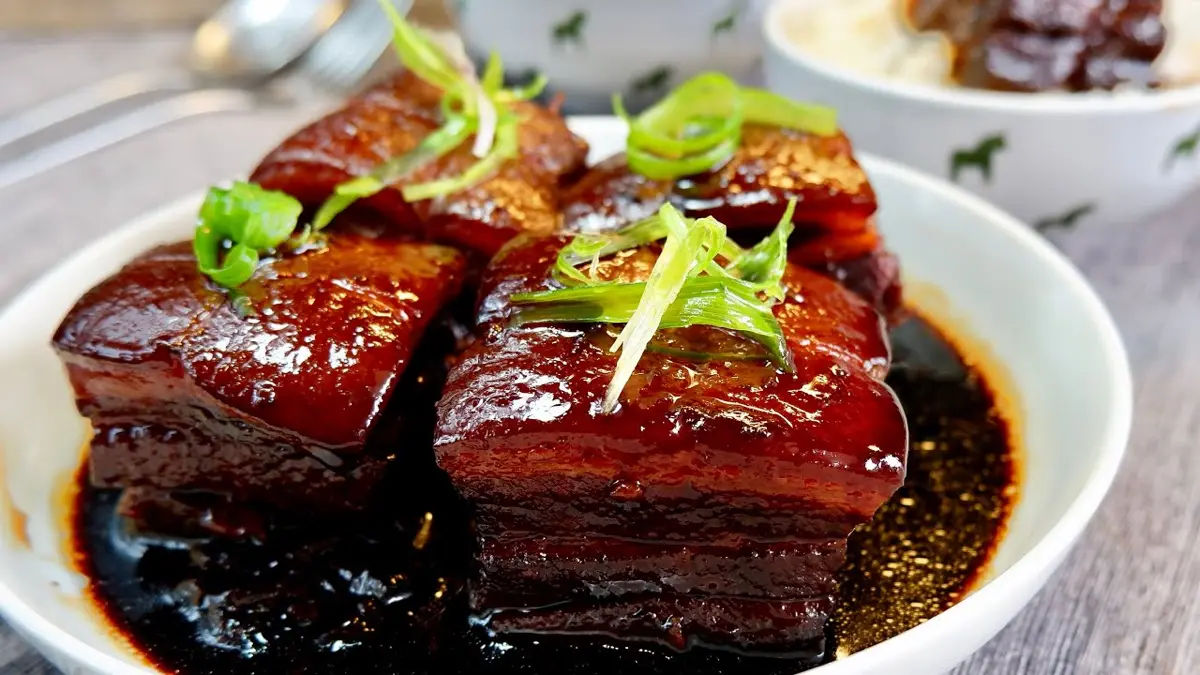
Dongpo Pork is a legendary dish in Chinese cuisine.
Street Food: Let’s not miss wandering through the buzzing night markets like Wujiang Road or Huanghe Road, where we can feast on all kinds of irresistible street snacks: grilled skewers, crispy jianbing (savory crepes), boldly aromatic stinky tofu, and more. It's the best way to experience the energetic, down-to-earth food culture of Shanghai.
4.2. The People of Shanghai: Modern Yet Deeply Rooted in Tradition
The people of Shanghai are known for their energy, modern outlook, and strong entrepreneurial spirit. They are quick to embrace new trends while still preserving profound cultural values.
Lifestyle and mindset: Shanghainese people often lead fast-paced, practical, and efficient lives. They place high importance on their work and careers, always aiming for progress and success.
Communication: While Mandarin is the official language, many locals use the Shanghainese dialect in daily conversations. We might overhear lively chats in this local tongue. Although many younger people can speak some English, learning a few basic Mandarin phrases will make it much easier for us to connect and receive help when needed.
Cultural presence: Despite being a sprawling megacity, Shanghai is a place where traditional Chinese culture still thrives. In the mornings, we can spot elderly locals practicing Tai Chi in public parks, or watch groups playing Chinese chess on sidewalks. Sometimes, we might even catch a traditional opera performance in a park or square. These small cultural moments are the soul of the city — modest, yet deeply moving.
If We Compare Shanghainese and Beijingers…
When talking about China’s major cities, Shanghai and Beijing are often compared for their stark cultural and lifestyle contrasts.
Shanghainese are seen as dynamic, modern, and business-savvy. They’re pragmatic, efficient, and quick to catch up with global trends — which mirrors Shanghai’s role as China’s financial and economic powerhouse.
In contrast, Beijingers are typically more traditional, serious, and even a bit conservative. As residents of the capital — the heart of China's politics and cultural heritage — they often embody the deep historical pride of the nation. Beijingers tend to value etiquette, social order, and traditions, and carry a strong sense of cultural identity.
Language also sets them apart: Shanghainese people frequently speak their local dialect alongside Mandarin, giving the city a distinct linguistic character. Meanwhile, Beijingers speak standard Putonghua (Mandarin) with a Beijing accent, which is considered the "official" pronunciation in China.
Culturally, Shanghai represents a fusion of East and West. We’ll see modern skyscrapers standing beside preserved old streets, and find global influences in food, fashion, and architecture. Shanghainese people are generally more outward-looking and open to foreign cultures.
Beijing, on the other hand, is a stronghold of classical Chinese culture. From the Forbidden City and Great Wall to Peking Opera and ancient alleyways (hutongs), everything in Beijing is soaked in historical depth. Beijingers tend to hold more tightly to these traditional values and may be less globally influenced compared to their Shanghai counterparts.
5. Explore Self-Guided Shanghai Tours with Tatinta Travel Platform
Although we’re focusing on a self-guided trip to Shanghai, a little help from experts can sometimes make the journey even better. If we’re looking to optimize our time, ensure smooth transportation, or simply want a reliable virtual companion, the Tatinta travel platform is a fantastic option.
At Tatinta, we won’t just find thoughtfully designed group tours — we can also browse à la carte services like discounted attraction tickets, chauffeured private car rentals, or even assistance with complex visa procedures. Tatinta allows us to maintain the spirit of independent travel while receiving just the right support to keep everything running smoothly. Let’s visit Tatinta and start crafting our own unique self-guided adventure in Shanghai!
Shanghai is calling, and with all these in-depth self-guided travel tips, we’re now ready to write our own story in this extraordinary city. Let’s prepare to immerse ourselves in the dazzling beauty, dynamic energy, and nostalgic charm of the “Paris of the East.”
We wish you a journey that’s unforgettable and full of emotion.
 Register
RegisterSign in Travel Agent
Sign in Supplier
Sign in Affiliate
Sign in Guru
















